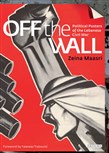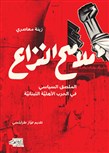[...]
The visual language of rebellion has a few commonalities that are adapted to individual cultures and countries. The images in Zeina Maasri's Off the Wall: Political Posters of the Lebanese Civil War are stylistically similar to some of the underground comics created in the '60s. But the messages in Lebanon from the '70s to the early '90s were decidedly more serious than those in the United States. Underground comics were concerned with sex and drugs, among other favored themes; the Lebanese activists were concerned with survival and victory. American undergrounders faced nightsticks and Mace when they demonstrated against government policy; the Lebanese factions used lethal weapons.
This is not a picture book per se, although it is well illustrated with black-and-white and color plates. Maasri, an associate professor of graphic design at the American University of Beirut, provides a detailed analysis of the nature of graphic propaganda and of the issues Lebanon faced during its civil war, along with explanations of various symbols and motifs. The book also includes a provocative chapter on martyrdom. Most of the images reproduced here did not break any new design territory - which makes sense. They were meant to function in a cluttered visual environment amid many messages. There are the requisite portraits of martyrs and a few anti-Israel protests (one with the swastika embedded in a Star of David). But there is one poster in particular that caught my eye for its conceptual curiosity. The designer is anonymous, and it is titled "Towards Independence." It looks pixelated, like a Whitman's Sampler box, and depicts a figure running with a torch. In the heat of a civil war, such a well-designed composition makes it seem as if the conflict were basically the Olympic Games.
[...]
Link to full-text article



